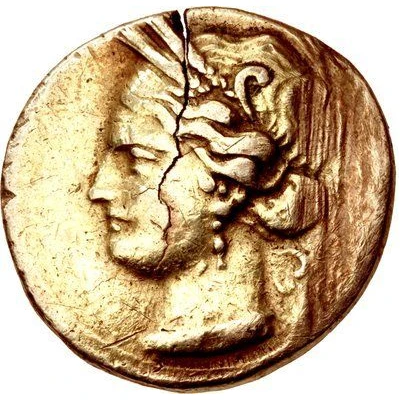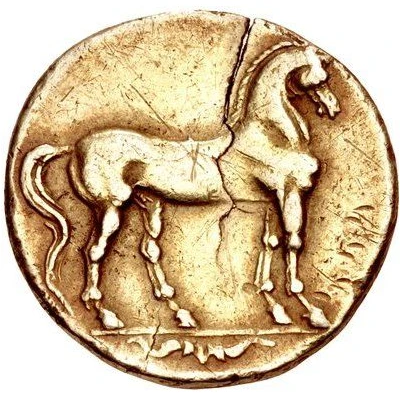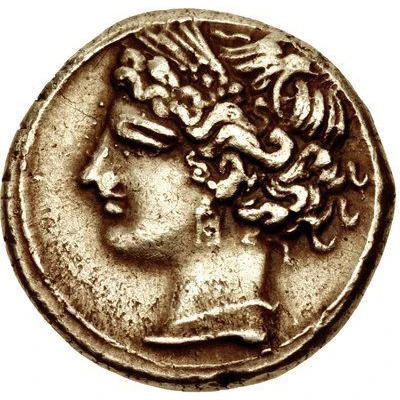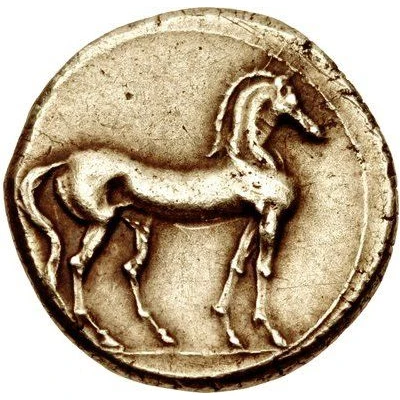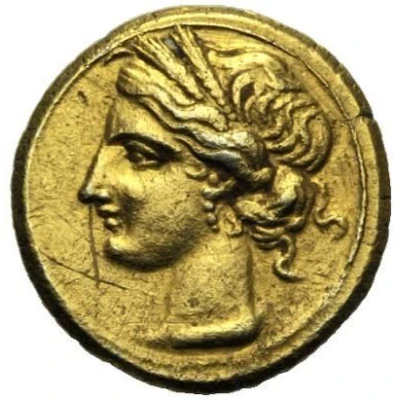
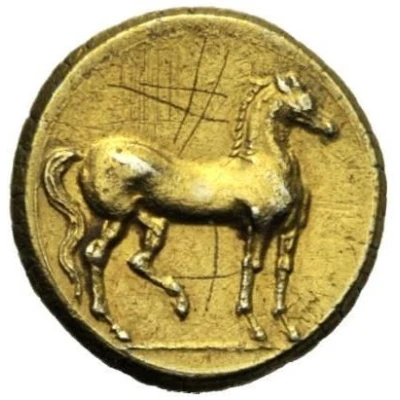

© Bertolami Fine Arts
⅜ Stater 220 BC - 210 BC
| Electrum | 2.66 g | 15 mm |
| Issuer | Carthage (Zeugitana) |
|---|---|
| Type | Standard circulation coin |
| Years | 220 BC - 210 BC |
| Value | ⅜ Gold Stater (4.5) |
| Currency | Shekel |
| Composition | Electrum |
| Weight | 2.66 g |
| Diameter | 15 mm |
| Shape | Round (irregular) |
| Technique | Hammered |
| Demonetized | Yes |
| Updated | 2024-10-09 |
| Numista | N#324908 |
|---|---|
| Rarity index | 100% |
Reverse
Horse standing right, left hind-leg is raised.
Interesting fact
The ⅜ Stater coin from Carthage (Zeugitana) was used as a form of currency during the Hellenistic period, and its design was influenced by Greek coinage. The obverse side of the coin features the head of the Greek goddess Athena, while the reverse side depicts a standing horse and a palm tree, which were symbols of the city of Carthage. The use of Electrum, a naturally occurring alloy of gold and silver, was a common practice in ancient coinage, as it was valued for its durability and resistance to wear and tear.
